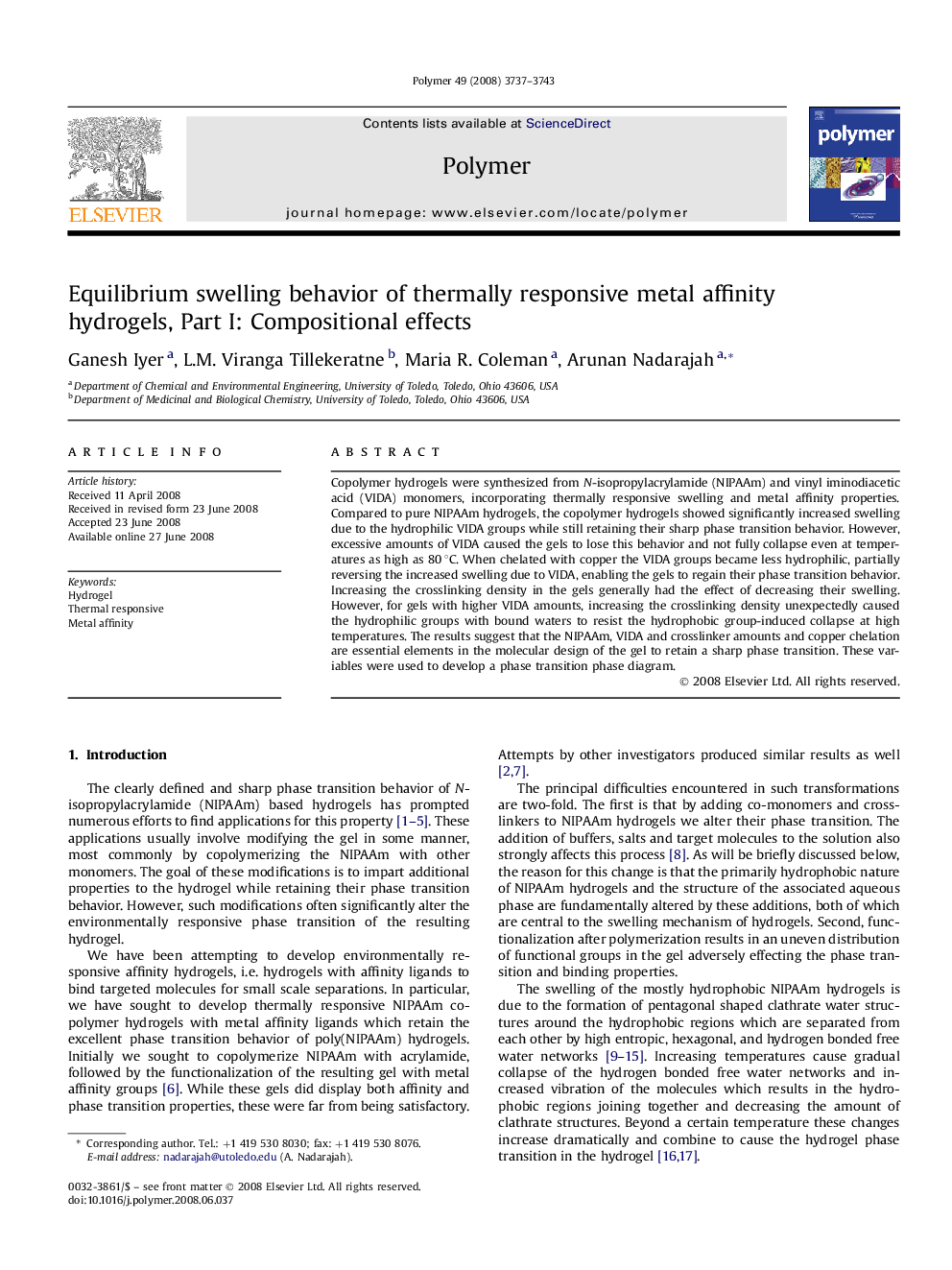| Article ID | Journal | Published Year | Pages | File Type |
|---|---|---|---|---|
| 5187078 | Polymer | 2008 | 7 Pages |
Copolymer hydrogels were synthesized from N-isopropylacrylamide (NIPAAm) and vinyl iminodiacetic acid (VIDA) monomers, incorporating thermally responsive swelling and metal affinity properties. Compared to pure NIPAAm hydrogels, the copolymer hydrogels showed significantly increased swelling due to the hydrophilic VIDA groups while still retaining their sharp phase transition behavior. However, excessive amounts of VIDA caused the gels to lose this behavior and not fully collapse even at temperatures as high as 80 °C. When chelated with copper the VIDA groups became less hydrophilic, partially reversing the increased swelling due to VIDA, enabling the gels to regain their phase transition behavior. Increasing the crosslinking density in the gels generally had the effect of decreasing their swelling. However, for gels with higher VIDA amounts, increasing the crosslinking density unexpectedly caused the hydrophilic groups with bound waters to resist the hydrophobic group-induced collapse at high temperatures. The results suggest that the NIPAAm, VIDA and crosslinker amounts and copper chelation are essential elements in the molecular design of the gel to retain a sharp phase transition. These variables were used to develop a phase transition phase diagram.
Graphical abstractDownload full-size image
